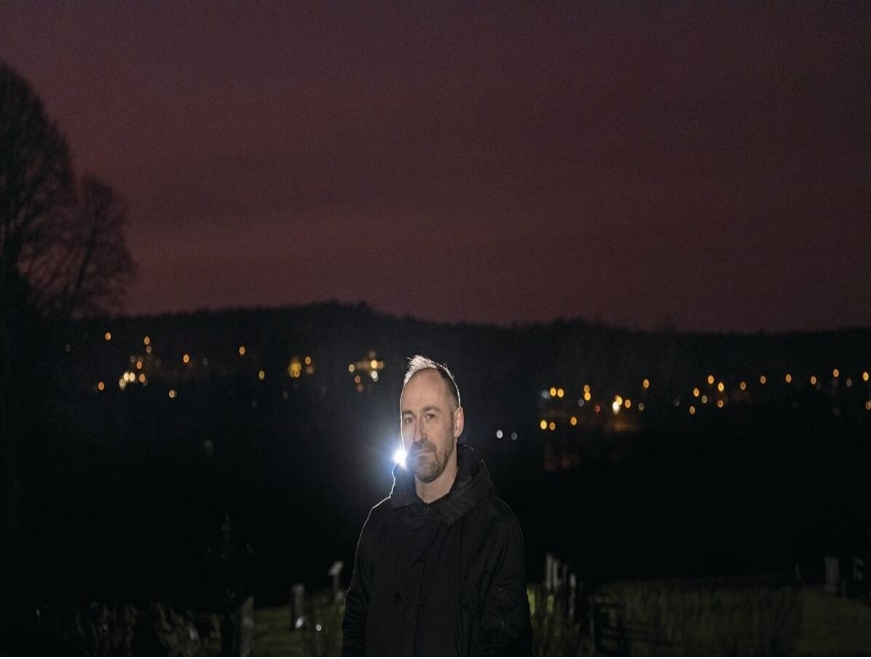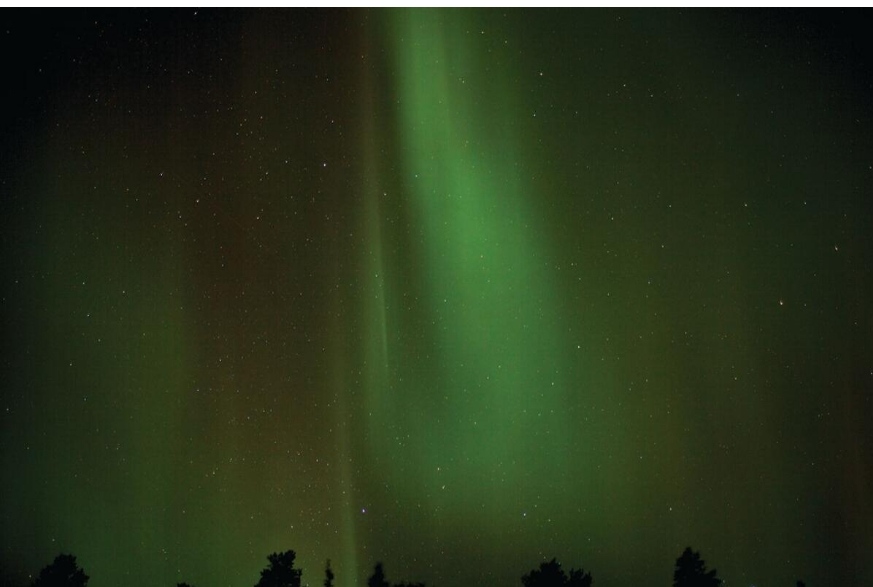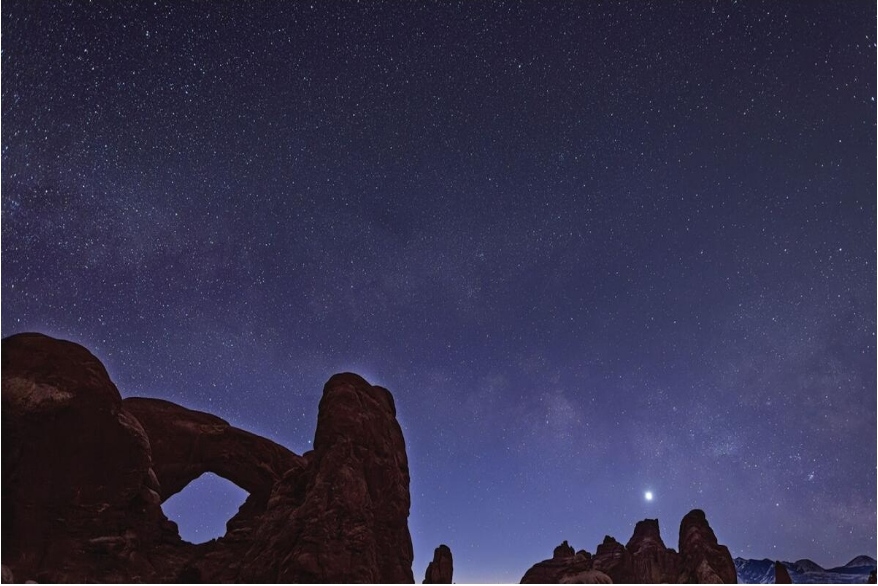A manifesto for loving the darkness, and not metaphorically
Light pollution is disruptive to many species, from corals to bats to the humans who put up all those lights. The Darkness Manifesto urges us to reconsider our drive to dispel the darkness

By Lisa Abend
Zoologist Johan Eklöf began to consider the disappearance of darkness in our brightly lit world in 2015, when he was out counting bats in southern Sweden. The surrounding grounds were dark, as they had been decades earlier when his academic adviser had tallied the bat populations in the region’s churches. In the intervening years, however, those churches — whose belfries are famously appreciated by the winged mammals — had been illuminated with floodlights.
“I started to think, how do the bats actually react to this?” Eklöf said.
The short answer: Not well. Together with his adviser, Jens Rydell, Eklöf launched a new bat census and discovered that in 30 years — the average bat’s life span — fully half the area’s colonies had disappeared.
That research soon led Eklöf to investigate how other species are affected by artificial lighting — including the species responsible for installing floodlights in churchyards. The resulting book, The Darkness Manifesto, which came out in English from Scribner on February 14, is a wide-ranging exploration of humanity’s troubled relationship with darkness, and the damaging effects of our drive to overcome it.
Astronomers first began using the term “light pollution” in the 1960s, and today it most often refers to the persistent glow that emanates from cities after dusk, blocking out the stars and tinting the night sky an orangish-grey. By 2016, a full 80 per cent of the global population — and 99 per cent of the population in the United States and Europe — lived under light-polluted skies.

A study published this year in the journal Science found that between 2011 and 2022, light pollution on Earth increased 9.6 per cent annually.
“It really shook my faith,” Christopher Kyba, a researcher at the German Research Centre for Geosciences and lead author of the study, said of the dramatic results. “I had been quite an optimist that with newer technology, things were going to get better, because lights are better designed. But instead what we saw is that most countries are getting brighter.”
Today, one-third of the world’s people cannot see the Milky Way, on even the clearest night. But the impact of all that light goes far beyond impeded stargazing. As The Darkness Manifesto explains in fascinating — if terrifying — detail, all living organisms are governed by light-sensitive circadian rhythms that, if disrupted, can unleash effects that range from an impaired sense of direction (pity the poor dung beetle, who, unable to see the stars that help it navigate, can’t get its nutrient-rich ball of excrement home) to mass executions (witness the fate of the swarm of grasshoppers that, drawn by the beam shooting from the Luxor casino, descended on Las Vegas in 2019, only to end up like so much lifeless confetti cluttering the Strip).
As anyone who has ever watched moths circle the porch light endlessly can attest, artificial bulbs can be fatal to insects.
“Many of them die before dawn, sometimes of sheer exhaustion,” Eklöf writes. Even those that survive “haven’t achieved their night’s goals. They haven’t gotten their nectar (and transported the plants’ pollen around), haven’t found a partner, and haven’t laid any eggs.”
But it’s not just insects. Newly hatched sea turtles head inland toward the city’s glow rather than to the moonlit sea. Tricked by outdoor lighting, urban trees stay green longer than their rural counterparts. On one Australian island, the light was so disruptive that wallabies, whose gestation is normally triggered by the summer solstice, ended up giving birth so much later in the season that food had run out. Even coral, which in Australia normally reproduces once a year when December’s full moon induces it to release a “snowstorm” of male and female sex cells, is getting confused; disoriented by artificial light, the gamete release is no longer synchronised, diminishing reproduction and contributing, it is thought, to coral bleaching.
When Eklöf, who also runs a consultancy that includes advising companies and governments on how to minimise their light pollution footprint, began doing research for The Darkness Manifesto, the diverse impacts of light pollution had yet to be extensively studied. The book was published in Sweden in 2020, and over the past couple of years, the subject has exploded, he said.
“And with every species studied, you find that light has some effects,” he said. “They are all interrelated too, so it threatens the whole system.”

NYT
That system includes us. The Darkness Manifesto tracks how light pollution has increased insomnia, depression and even obesity: Leptin, the hormone that controls appetite, works in conjunction with melatonin, the light-sensitive hormone that tells us when to sleep. But Eklöf is also interested in impacts that aren’t strictly health related.
“Losing the connection to the night sky and to the stars is losing our connection to nature, but it’s also about losing our history,” he said. “The night sky has been the same for billions of years, and what we see now is the same sky as our ancestors were looking at and making up stories about.”
Many of those stories were about the terrors that darkness held for humans, who, unlike roughly two-thirds of mammals, are not nocturnal. Fear still motivates us to dispel darkness, even though we are, for the most part, a long way from the demons and monsters that populated our predecessors’ nights.
“People often say that they need the light to feel safer,” Eklöf said, “even though all these studies show crime has nothing to do with a bright or dark city.”
Kyba, of the Science study, agrees with that explanation in part.
“It’s really easy to say: ‘They want to make everything dark. Look at how crazy that is,’” he said of initiatives to reduce light pollution. “But reducing light pollution should have something for everyone. From a fiscal standpoint it makes sense, from an environmental standpoint, it makes sense, and even if you are concerned about the issues of access and mobility for women, doing a better job of harmonising the lighting in the city is going to make everyone’s vision better.”
And then, Kyba added, there’s the fact that in any city, there are vast numbers of people — homeowners, business owners, city officials — making their own, often uninformed, decisions about exterior lighting.
“You cannot expect that 400,000 people will all be experts in light and choose an effective design,” he said.
Yet alone among the major crises confronting the planet today — climate change, biodiversity loss, pandemics — the pollution caused by artificial lighting has a relatively easy solution: You can just turn the light off. As Eklöf points out, you don’t even have to go all the way. Light can be used only when necessary.
“If there are no people in the park, you don’t need to light up the park,” he said. Motion sensors, timers, and red or yellow bulbs, whose light more closely mimics that of the stars at night than bright white light, can also help.
Already, some places are taking action. France has adopted a national policy that imposes curfews on outdoor lighting and drastically limits the amount of light that can be projected into the sky. Flagstaff, Arizona, regulates the direction of outdoor beams and limits the number of lights in a given place. And around the globe, some countries, especially those with regions less contaminated by city lights, are embracing “dark sky tourism,” which encompasses activities like stargazing walks or excursions to see the Northern Lights.
Ireland, which has dark sky parks and even, in Mayo, a dark sky festival, is positioning itself at the forefront of this kind of tourism.
“If you think about the map of Europe, there’s nothing between us and Canada,” Brian Espey, chairman of Dark Sky Ireland, said. “We have these little rims of dark sky areas that are protected and that we can package as part of a destination, something that’s maybe associated with ecotourism but also just something that’s unique about the area.”
Eklöf has expanded his consultancy to include advising on how to reduce light pollution. Last summer, he worked with one Swedish municipality to devise a lighting system for forest trails that would be more animal friendly. They used red lights, he said, and found the same number of light-sensitive species before and after the lights went in.
“It’s a good indication that this might be a way forward.”
Eklöf hopes his book, which culminates in an actual manifesto, will inspire readers to embrace the dark of night more fully. Some of his research focuses on the eyesight of bats. (Colloquialisms aside, they are not really blind.) That work has meant he’s spent many nights outdoors.
“I myself like the darkness, and I like looking for bats in twilight,” he said. “It’s kind of relaxing.”
Relaxing, and occasionally thrilling. The other night, Eklöf took his teenage daughter outside to watch a comet streak across the heavens.
“She’s 14, so she’s not really interested in anything,” he said with a laugh. “But that, she found fascinating. There is something about the sense of just being small underneath the night sky that fascinates all of us.”
This article originally appeared in The New York Times.




